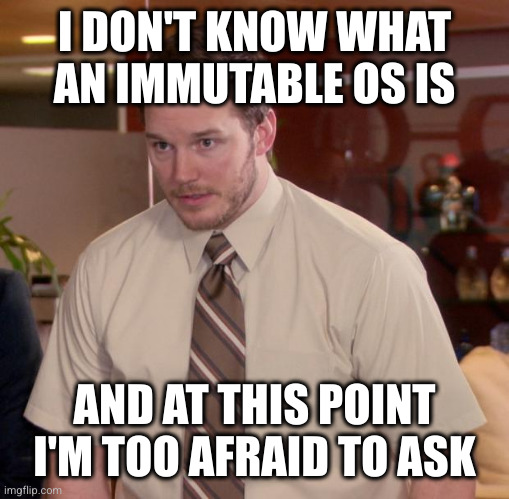this post was submitted on 24 Jul 2024
510 points (97.8% liked)
linuxmemes
21009 readers
1118 users here now
Hint: :q!
Sister communities:
- LemmyMemes: Memes
- LemmyShitpost: Anything and everything goes.
- RISA: Star Trek memes and shitposts
Community rules (click to expand)
1. Follow the site-wide rules
- Instance-wide TOS: https://legal.lemmy.world/tos/
- Lemmy code of conduct: https://join-lemmy.org/docs/code_of_conduct.html
2. Be civil
- Understand the difference between a joke and an insult.
- Do not harrass or attack members of the community for any reason.
- Leave remarks of "peasantry" to the PCMR community. If you dislike an OS/service/application, attack the thing you dislike, not the individuals who use it. Some people may not have a choice.
- Bigotry will not be tolerated.
- These rules are somewhat loosened when the subject is a public figure. Still, do not attack their person or incite harrassment.
3. Post Linux-related content
- Including Unix and BSD.
- Non-Linux content is acceptable as long as it makes a reference to Linux. For example, the poorly made mockery of
sudoin Windows. - No porn. Even if you watch it on a Linux machine.
4. No recent reposts
- Everybody uses Arch btw, can't quit Vim, and wants to interject for a moment. You can stop now.
Please report posts and comments that break these rules!
founded 1 year ago
MODERATORS
you are viewing a single comment's thread
view the rest of the comments
view the rest of the comments

Have you used Docker before?
You know how Docker images are read-only? Changes are layered on top, but the base image itself is read-only and all other files are stored in a volume outside the container. Containers are seen as ephemeral. When you upgrade to a new version of the image, the container is deleted and a new fresh one is created.
Imagine that but for the whole OS.
A related concept is an "atomic" OS, which means upgrades are atomic. Atomic in this context means that either the whole upgrade succeeds, or the whole upgrade fails. It can't get stuck in a half upgraded state. If you've dealt with databases before, it's a bit like database transactions.